I was looking a the Ohio wall performance during the run with the
collimator in for three different targets, D2, H2 and empty. All plots
are normalized to beam charge.
Background:
The first plot is the plot of the reconstructed vertex for what I call
"en" events, that is electron on the left/right (top/bottom) and a
neutron counter hit on the right/left with not tof scintilator hit.
Already data shows a rise above background for D2 target, especialy for
the right neutron wall (top plot).
The second plot is the plot of a neutron wall time of flight for both
sides. The what we call "gamma" peak is clearly visible for all gasses,
however the second peak is only present for D2 gas. It is still a
mistery why there is less "gammas" for the background events. This
could be due to the misidentifying "fast" neutrons as gammas, because of
the relatively wide "gamma" peak.
The third plot is the reconstructed vertex witht he cut on what I call
"neutron" peak (or second bump). The situation becomes better. The is
still much more background in the left Ohio wall than the right. I
think these are charge particle that hit the neutron wall from the other
side (bend in the ring) and never reach scintilators in coincidence with
low energy electrons in the other sector.
This is what I did next, cut out low energy "crap" (<0.2 GeV). The next
plot is the vertex for this cut. The background is now comparable in
both sectors at about 6%, which is managable.
Rates:
The next plot is the Q^2 plot for the "good" e-n events for both
sectors. The count rate is normalized to charge.
Since I cannot reconstruct the missing mass right now for the next plot
I cut on the energy transfer <0.45GeV to isolate quasi-elastic events.
The last plot shows my best guess for the quasi-elastic events. I
cannot explain the difference in rate for each sector. For now I will
use electron-left, neutron-right data.
Assuming an average current of 80 mA or 12.5 seconds per coulomb I
estimate the following rates for this flow (0.1 sccm):
Q^2 rate/coulomb rate/sec events in
800 hours
0.05 0.2
0.016 46080
0.15 0.52
0.0416 119808
0.25 0.21
0.0168 48384
0.35 0.08 0.0064
18432
0.45 0.03 0.0024
6912
The rate at Q^2 of 0.25 is comparable to Igor's value if scaled by the
correct flow (~0.07 scmm) and corrected for higher energy ( I have not
done this yet). So, in order to do better than NIKHEF we need to
increase neutron detection efficiency and do better with the figure of
merrit (target polarization). Also, we can try to increase average
current.
Best regards, Vitaliy
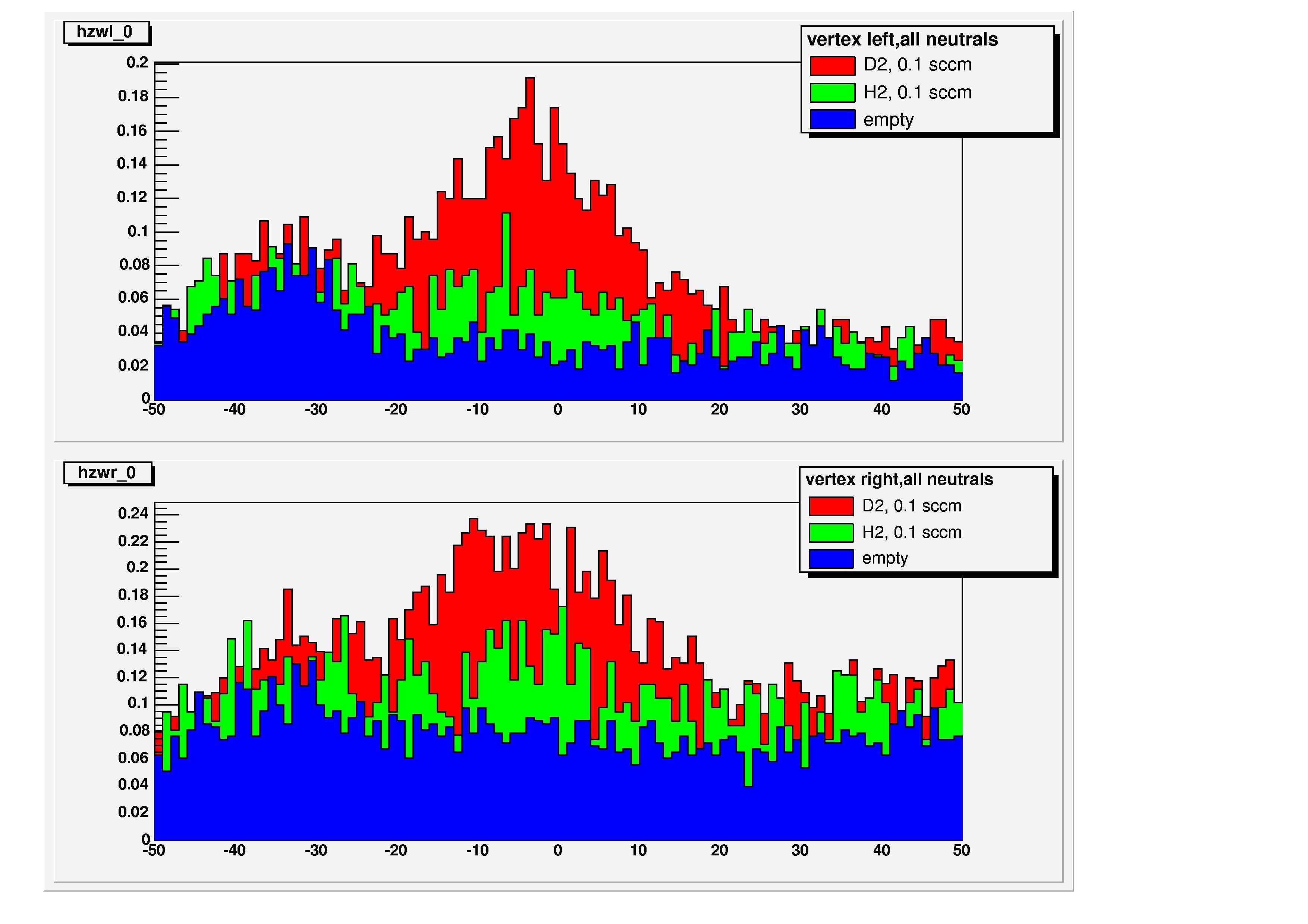

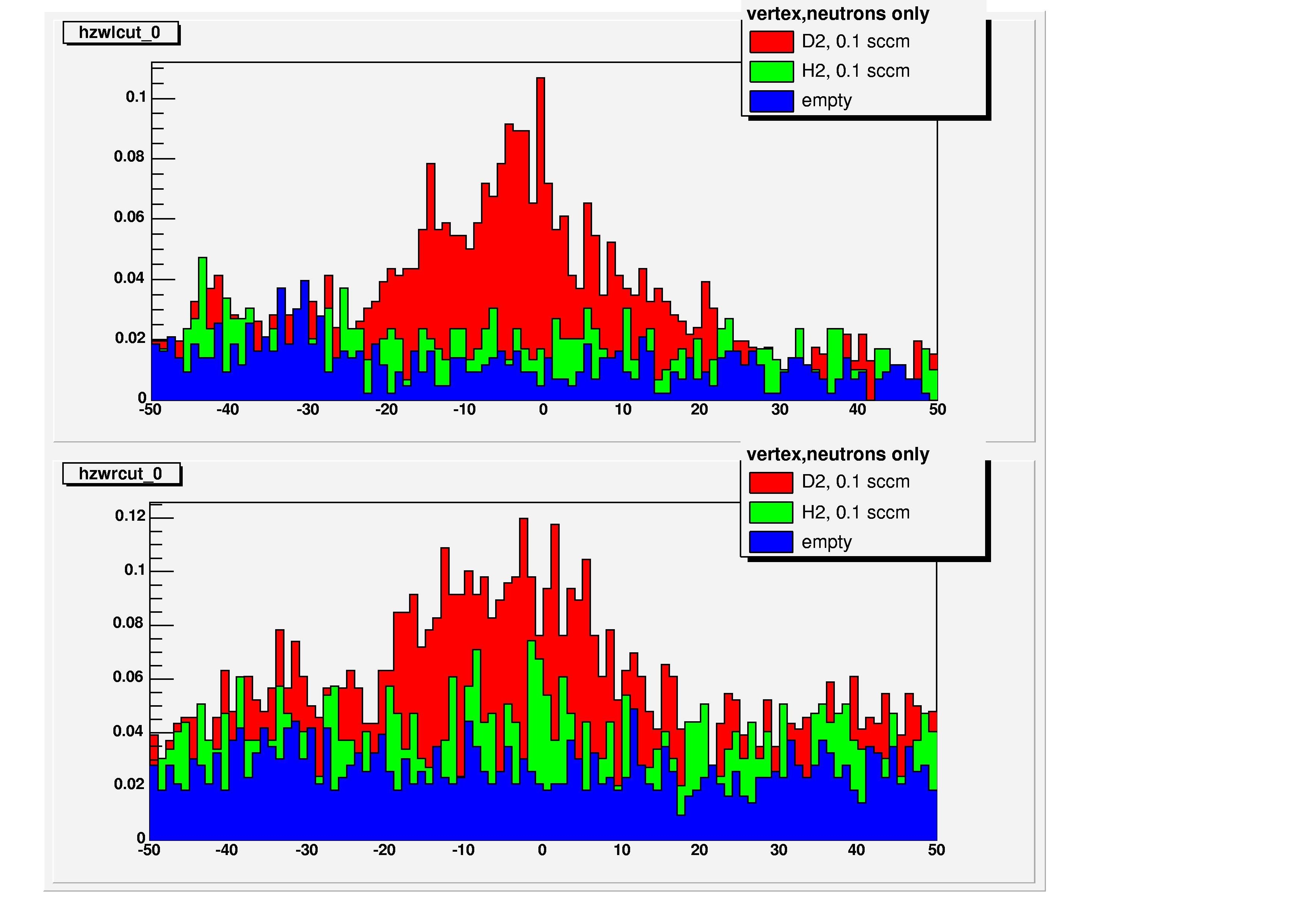
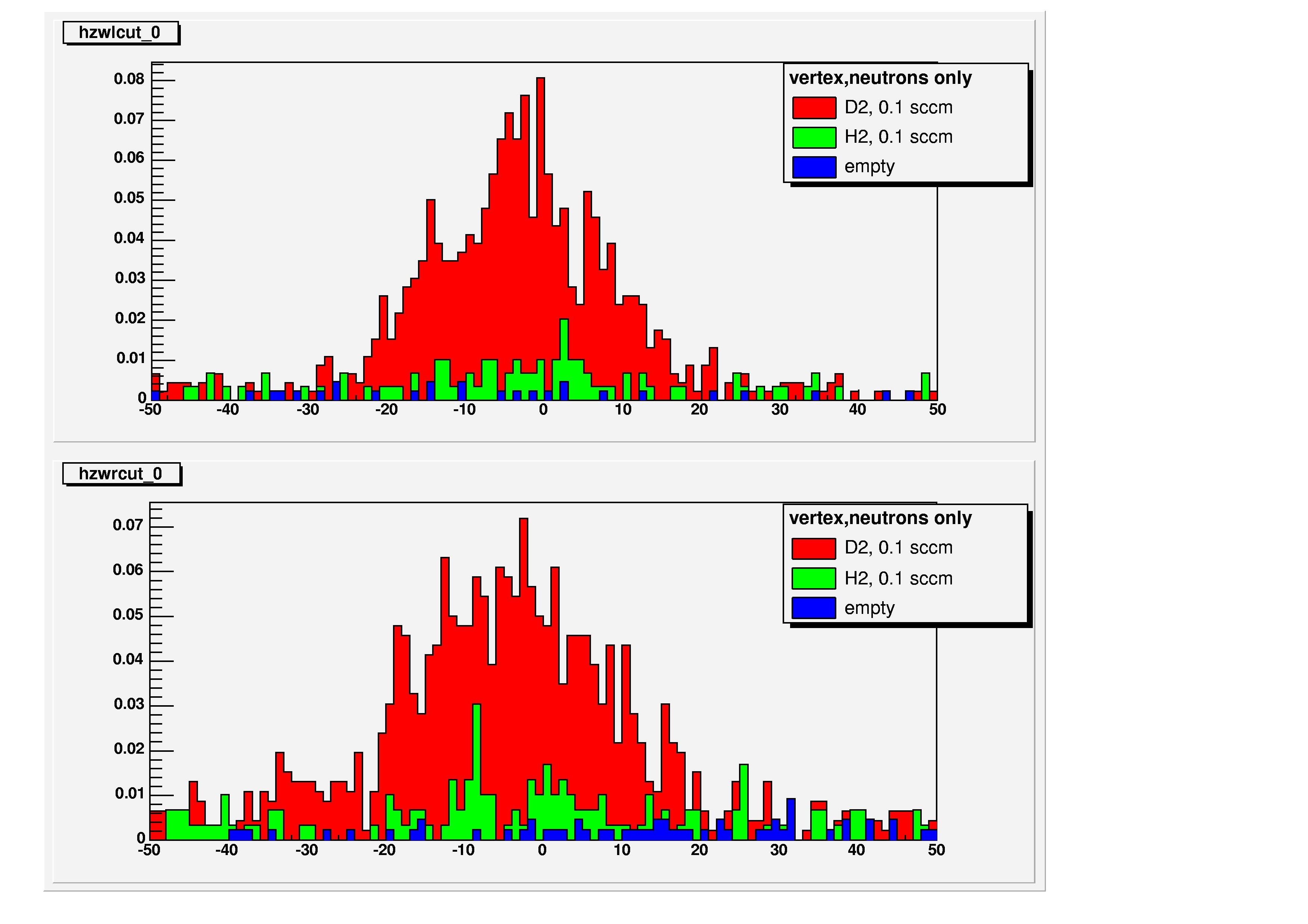
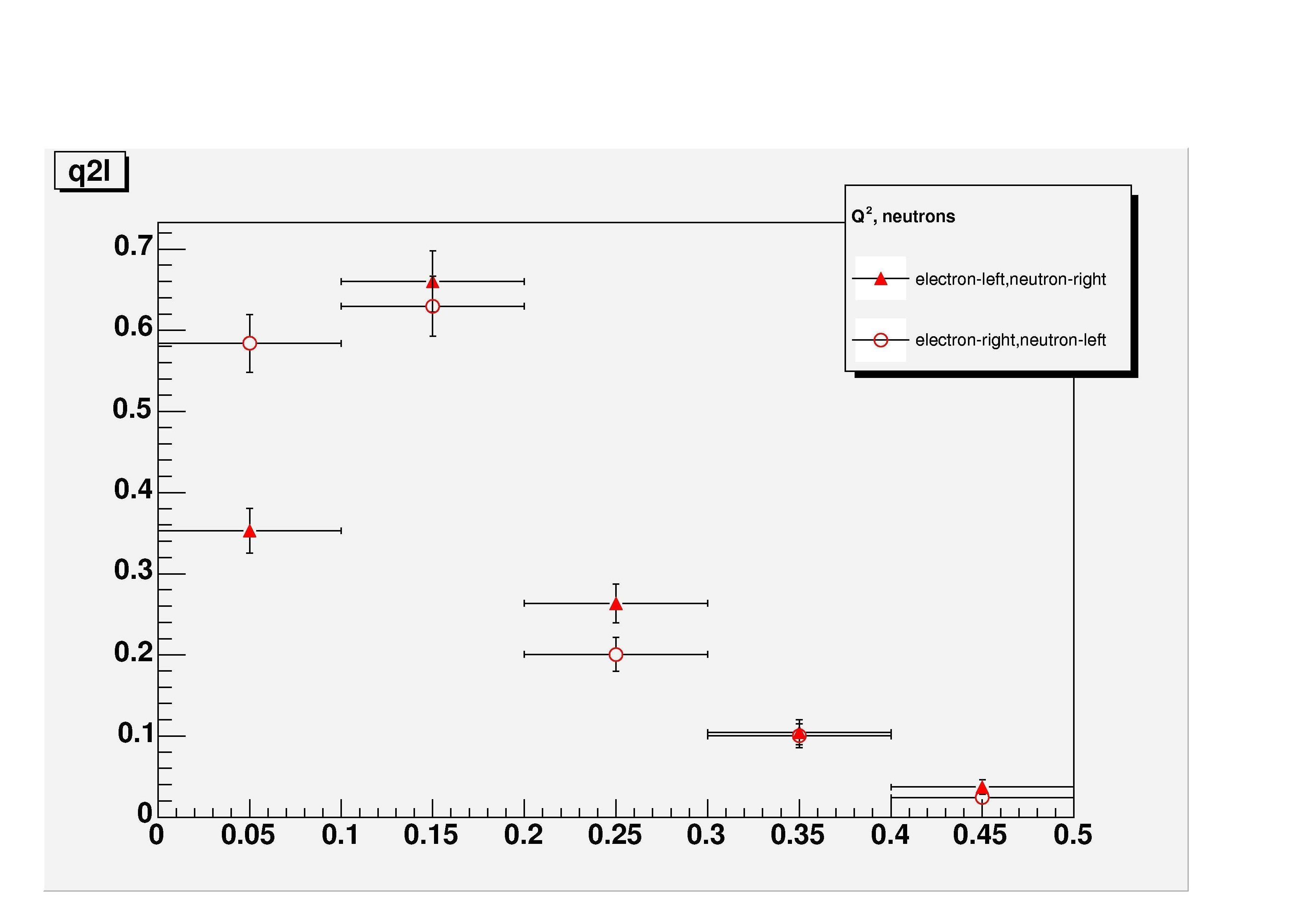
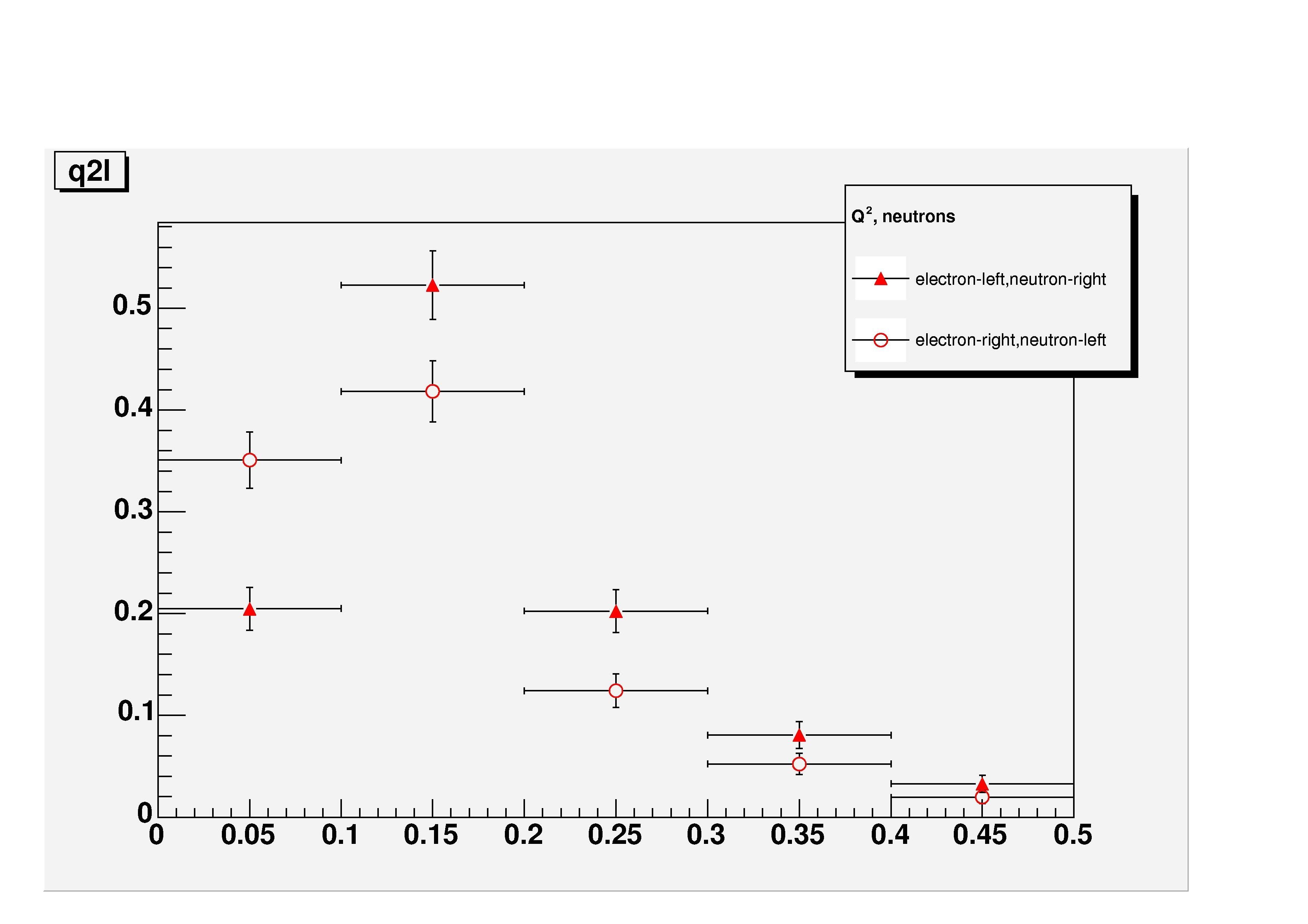
This archive was generated by hypermail 2.1.2 : Mon Feb 24 2014 - 14:07:30 EST